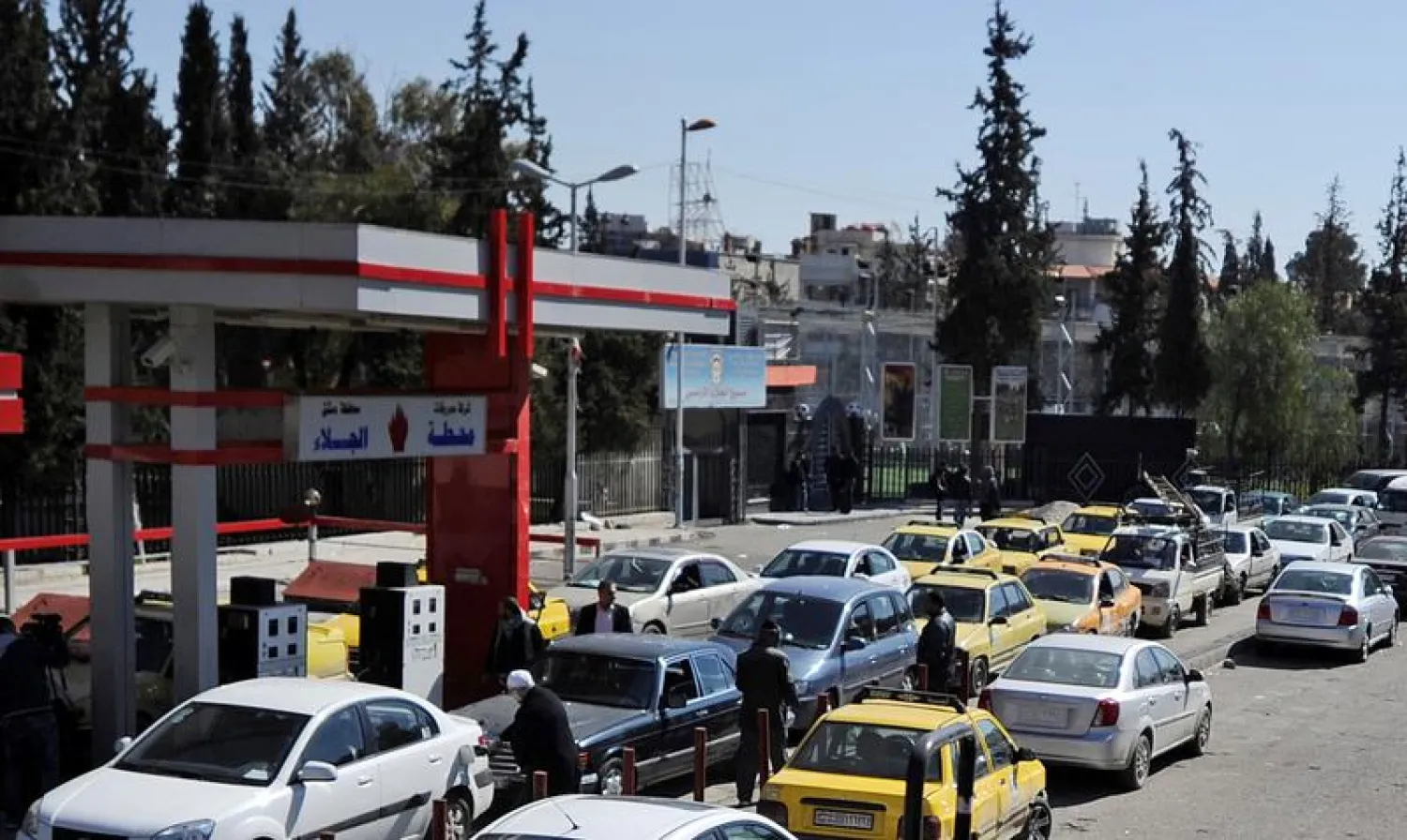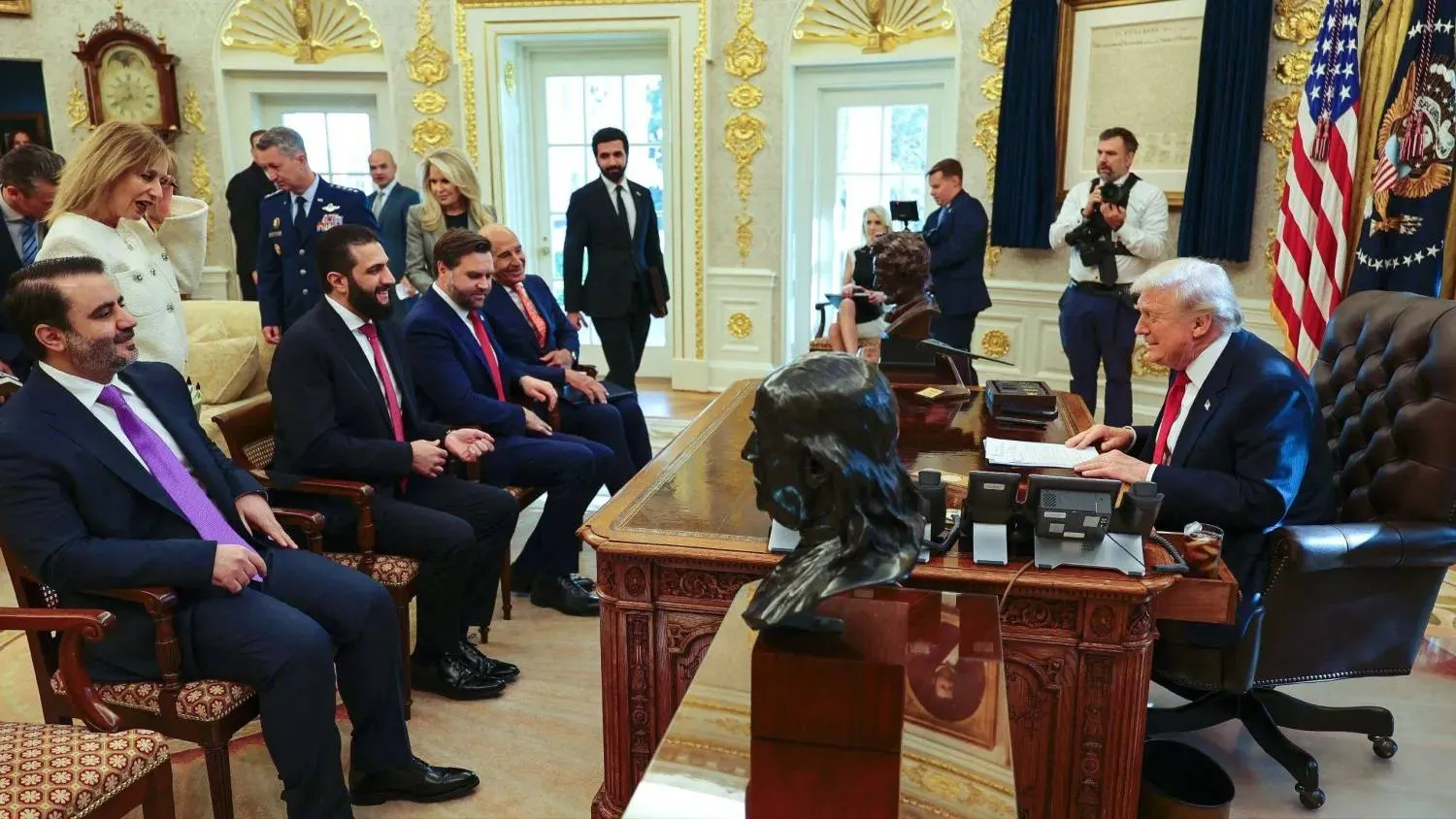Three small Syrian details, in Damascus, Daraa, and As-Suwayda, are linked by a thread that leads to major conclusions. With the beginning of the second decade of the Syrian tragedy, the local “players” started to adapt to live under collapses and ruptures, for many years, backed by the external “stakeholders”, who are competing to shape the new Syrian fabric.
The details of Damascus are the darkness, the “ice queues” and the talk of migration. For the first time in a hundred years, the Syrian capital sleeps in complete darkness. Electricity is available for two out of 24 hours, in the richest Damascene neighborhoods, which are inhabited by the traditional high officials and the war’s “nouveaux riches”.
If the rise in food prices, the lack of fuel, and the queues for bread and gasoline are not something new, Damascus streets are seeing people waiting in long lines for cold cubes that protect against heat and preserve food.
The bet was on a radical government change that puts at the top of its priorities addressing daily problems and offering solutions or attempts to solve issues related to corruption and administrative stagnation. However, the government lineup disappointed the audience and fell short of touching daily concerns.
There are no immediate breakthroughs in the daily search of gas cylinders and bread, nor solutions to the energy crisis and the exchange rate of the lira, nor political progress in the country, which is torn by three or four spheres of influence.
What is also new in Damascus is the open talk about migration. Before, people used to speak quietly about it, while now they loudly declare their wish in the streets, and in front of guests. It is not surprising that a Syrian human rights organization announced that the people residing in the country advised Syrians abroad not to return.
However, the people of Daraa al-Balad were surprised by a desire from Damascus for a military return to its neighborhoods, which opponents considered the “cradle of the revolution” a decade ago.
Behind this desire lies a thread that extends beyond Daraa and its neighborhoods. Damascus, backed by Tehran, wants to return to the borders of Jordan and the line of disengagement in the occupied Golan, as part of Iranian efforts to establish “strategic fronts” in southern Syria, southern Lebanon, Iraq, and Gaza... and others.
Moscow, for its part, has other calculations. It is still looking for local arrangements in agreement with its ally in Daraa, Ahmed Al-Awda. Those arrangements may be sufficient for the return of “state control” and the preservation of the Russian-American-Jordanian agreement concluded in the south in 2018, and which guarantees the elimination of terrorism and the exit of Iran’s factions, in exchange for the return of the government and the presence of a local authority.
Moscow is betting that such arrangements would give appetite for Arab countries for “normalization” and support the Russian model in Syria and reconstruction plans.
Russia succeeded in postponing a military resolution in southwestern Syria, but it was not able to abolish it, as happened in its northwest with its understanding with Ankara, and in its northeast through its agreement with Washington.
The Daraa diaries are marked with clashes, assassinations, sieges, negotiations, and the swaying between a new settlement and another incursion. Amid this situation, a political party suddenly emerged in Jabal Al-Arab in As-Suwayda, supported by an armed faction, whose members are Druze, in uniform, and well-trained.
This political party is the Syrian Brigade Party, and its armed wing is the Anti-Terrorism Force, which includes about 2,500 fighters, with attractive salaries for each element and leader.
The two organizations, which were formed over the last month, share unified rhetoric.
The first is “an independent military force with its leadership, and its affiliates, all of whom are from As-Suwayda Governorate, aiming to fill the security vacuum in the area.”
The second is a political party that was established “in cooperation with international and regional sides, to realize a dream – that is the revival of As-Suwayda’s historical political role after “the collapse of state institutions and the inability to secure bread, medicine, electricity and water and all the necessities of life, in light of an irremediable corrupt system.”
As-Suwayda’s diaries are about kidnappings, control centers and youth recruitment, and the struggle over drug and hashish smuggling lines to neighboring countries. It is a struggle related to building spheres of influence, but also pertains to the seizure of financial resources and the competition between the war “nouveaux-riches.”
Other details contribute to the interpretation of these diaries, such as the agreement of Turkish and Russian soldiers to exchange water for electricity in the east of the Euphrates, and the two parties’ understanding to allow a Turkish company to provide electricity in Idlib.
Are the four threads of Syria still intertwine in its capital, Damascus? A question with an answer that will disappoint and shock many Syrians at home and abroad.









